Astrophotography is a fascinating and challenging field that requires specialized equipment, including a high-quality camera.
Whether you’re a beginner or a seasoned astrophotographer, choosing the best camera for capturing stunning images of the night sky can be a daunting task.
When it comes to astrophotography, there are a few key factors to consider when selecting a camera.
But ultimately, the best camera for astrophotography will depend on your specific needs and budget.
Regardless whether you’re looking for a compact and portable camera for travel or a high-end DSLR for professional-level results, there are plenty of options available on the market today.
It can be difficult to navigate through the endless information you can find online to pinpoint the perfect camera to help you capture breathtaking images of the cosmos.
This is where you have come to the right place.
I have been interested in the world above us since I was a young child.
My personal fascination in planets and celestial events is one that continues to grow and led me into astrophotography.
After many years of astrophotography, I have learnt that it is an incredible skill that is best supported by the right camera.
I have been on a personal mission recently to find a new camera for astrophotography.
Along the journey, I tried and tested many incredible cameras that are currently on the market.
To make my decision, I narrowed it down to the five best cameras for astrophotography that I have reviewed for you below.
There is no doubt in my mind that your perfect astrophotography camera is within this list.
However, whilst there are some that outshine the rest, there is no specific camera that is THE BEST for astrophotography.
The best camera for astrophotography is open to personal interpretation and your own wants and needs.
Following the reviews, you can read through my how to buy guide detailing the top elements to look for in a camera for astrophotography.
So if you’re ready to find your perfect photography tool, read on to meet the best cameras currently on the market.
Best Camera for Astrophotography – Reviews
Astrophotography cameras are specialized cameras designed for capturing images of celestial objects such as stars, galaxies, and planets.
They typically have high ISO ranges, large sensor sizes, and specialized features such as long exposure times to capture the faint light of distant objects.
Whilst many have the same or similar features, performance is a highly variable factor.
Thankfully, you are about to be introduced to five incredible cameras for astrophotography to help your decision.
Canon EOS 6D Mark II – Best Camera for Astrophotography Overall
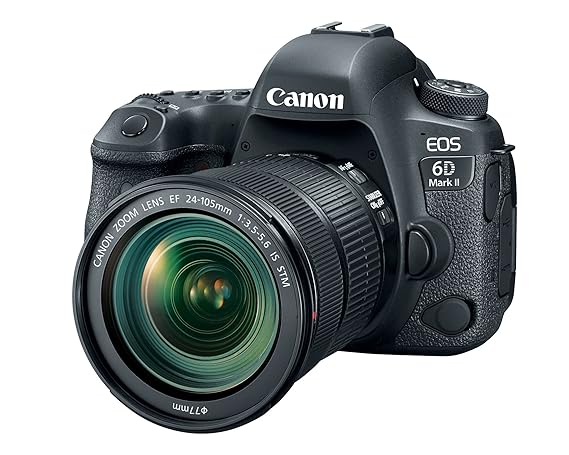
The Canon EOS 6D Mark II is an excellent camera for astrophotography.
There are several key features that make it a standout choice for photographers interested in capturing stunning images of the night sky.
One of the most significant advantages of the 6D Mark II is its large full-frame sensor, which allows for excellent low-light performance and reduces image noise, even at high ISO settings.
The camera’s 26.2-megapixel resolution is also ideal for capturing high-quality images of stars, galaxies, and other celestial objects.
Another key feature of the 6D Mark II that makes it well-suited for astrophotography is its long exposure capability, with a maximum shutter speed of 30 seconds.
This is particularly important when capturing faint objects such as nebulae and star clusters, which require longer exposure times to capture sufficient light.
Additionally, the camera’s built-in GPS and Wi-Fi capabilities make it easy to geotag your images and transfer them wirelessly to your computer or mobile device.
Finally, the 6D Mark II is compatible with a wide range of Canon lenses.
This includes several high-quality options designed specifically for astrophotography, such as the Canon EF 14mm f/2.8L II USM lens.
Megapixels and Sensor – Canon EOS 6D Mark II is a CMOS full-frame sensor camera that provides 26.2 megapixels. It uses a DIGIC 7 image processor that helps you get quality images all the time. This is incredible for a camera for astrophotography allowing you to get highly detailed, crisp and sharp images of the night sky.
Low Light Performance – Extended ISO range up to 102,400. The exceptional autofocus quality of Canon EOS 6D Mark II also allows you to get strongly focused shots even in low light conditions. This is crucial for astrophotography when capturing detailed shots in darkness.
Image Stabilization – The Canon EOS 6D Mark II has in-built digital image stabilization. It provides you with an optical image stabilizer on compatible lenses.
Noise Reduction – The Canon EOS 6D Mark II provides you with a multi-shot noise reduction feature and a suitable ISO range. The ISO range falls between 100 to 40000 helping you to capture distortion-free and picture-perfect images.
Shutter Speed – It functions from 1/4000 for up to 30 seconds. This allows you to shoot smooth and bright shots even at night.
Exposure Duration – 30 seconds.
Battery Life – A decent battery life for astrophotography lasting up to 1200 shots on a single charge or several hours without capturing.
If you are a professional photographer who loves stargazing and capturing events without messing it up, then Canon EOS 6D Mark II is meant for you. Overall, the Canon EOS 6D Mark II is an excellent choice for astrophotography, offering a winning combination of high image quality, long exposure capability, and compatibility with a range of lenses and accessories.
“I was seriously impressed by the Canon EOS 6D Mark II and found it to be the best camera for astrophotography overall.”
Sony A7 III – Best Camera for Astrophotography for Most Features
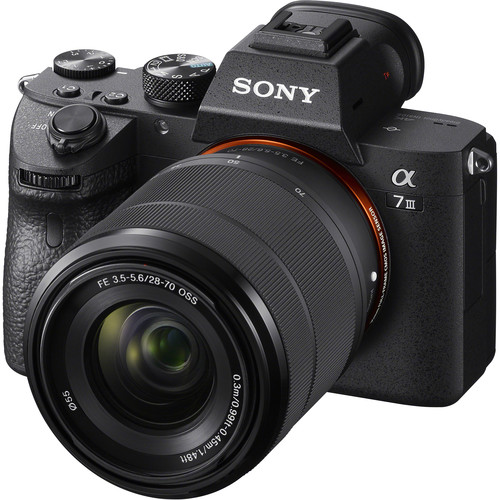
The Sony a7 III is an outstanding camera for astrophotography, thanks to a range of features that make it a top choice for capturing stunning images of the night sky.
The a7 III has a full-frame 24.2-megapixel sensor, which provides excellent low-light performance and reduces image noise, even at high ISO settings.
The a7 III also features Sony’s advanced image processing technology, which enables high-speed continuous shooting and excellent image quality, even in challenging lighting conditions.
Additionally, the camera’s extended ISO range up to 204,800 allows for capturing detail even in extremely low light.
Furthermore, the a7 III has a long exposure time of up to 30 seconds, making it ideal for astrophotography.
The camera’s built-in image stabilization system makes it easy to capture crisp and sharp images of the night sky.
Plus, the compatibility with a wide range of lenses, including Sony’s specialized astrophotography lenses make this camera a top choice.
This camera also features advanced autofocus technology that helps to keep moving objects such as stars and planets in sharp focus.
Finally, its tilting touchscreen LCD makes it easy to capture images from various angles.
Megapixels and Sensor – Sony a7 III has a 35mm full-frame CMOS image sensor with an illuminated structure that collects light effectively. The 24.2 megapixels and image processor process your data at high speed.
Low Light Performance – The reliable autofocus allows you to capture unique shots in low light or the dark. It also performs gradation for any shadow in the picture providing you with excellent image quality.
Image Stabilization – Features built-in 5-axis optical image stabilization for sharp images including moving subjects.
Noise Reduction – With an ISO range of 100-51200 that extends to 204,800, image noise is eliminated or very low. At the same time, area-specific noise reduction and detail reproduction are maintained.
Shutter Speed – Features dynamic shutter speed capable of managing camera shakes with a decent lens for astrophotography.
Exposure Duration – 30 seconds.
Battery Life – Below average battery life for an astrophotography camera capturing up to 710 shots whilst also draining battery life in standby mode.
The Sony a7 III is a great choice for astrophotography, offering high-quality images, long exposure times, and advanced features in a compact and easy-to-use package.
“I found the Sony A7 III to be a great camera for astrophotography overall but was let down by the battery life. It left me worried that I would miss capturing a meteor shower as the battery was draining whilst in standby.”
Nikon D850 – Best Camera for Astrophotography for Ease of Use
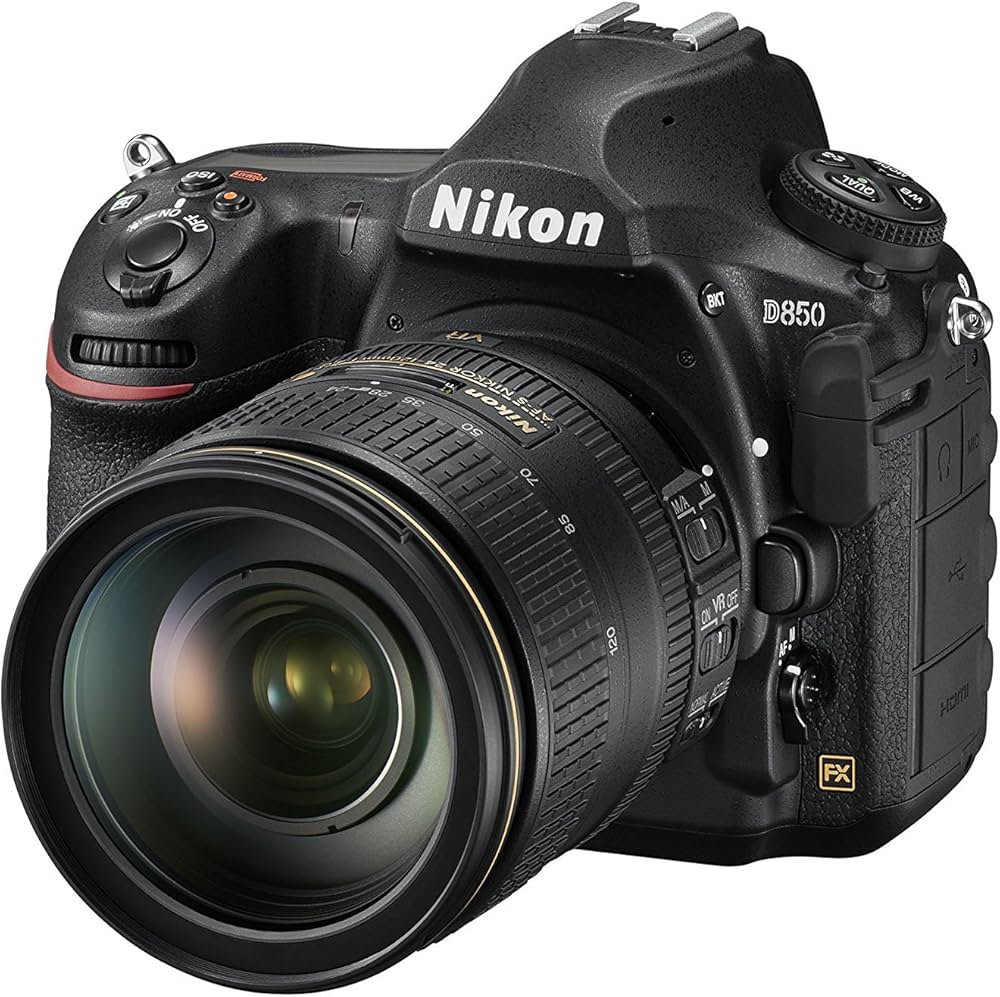
If you’re serious about astrophotography, the Nikon D850 is an excellent camera that is sure to meet your needs.
With its 45.7-megapixel full-frame sensor, the D850 is capable of capturing stunning images with excellent detail and resolution.
This is especially important when photographing celestial objects, where even the smallest details can make a big difference.
Additionally, the D850 features a low-pass filter that helps to reduce image noise and improve overall image quality, making it ideal for shooting in low-light conditions.
The camera’s high ISO range of up to 25,600 further enhances its low-light capabilities, enabling you to capture clear and detailed images of the night sky.
The D850’s long exposure time of up to 900 seconds is perfect for capturing faint objects such as nebulas and galaxies.
Its compatibility with a wide range of Nikon lenses, including specialized astrophotography lenses, provides even greater flexibility when composing your shots.
Furthermore, the D850 features a range of advanced features, including a tilting touchscreen LCD, built-in Wi-Fi, and 4K video capability, making it a versatile camera for all your photographic needs.
Megapixels and Sensor – Full-frame CMOS image sensor with 45.7 megapixels. The large sensor size helps to get the maximum output while doing astrophotography. This is one of the best cameras for astrophotography in terms of image quality, simply outstanding.
Low Light Performance – ISO range of 64-25600 which helps this camera perform well in the dark. The Nikon D850 is capable of taking blur-free shots with the help of its fast autofocus and efficient low-light performance. This feature is beneficial for getting dynamic pictures of the dark night sky.
Image Stabilization – No built-in image stabilization. This is a major downfall of this camera.
Noise Reduction – Low pass filter manages to reduce noise well even at high ISO making it perfect for capturing nightscapes.
Shutter Speed – There is no vibration in the shutter. As a result, you can click sharp picture-perfect images.
Exposure Duration – 900 seconds. This is incredibly impressive and the best camera for exposure time. This allows you to capture the intricacies of distant subjects.
Battery Life – Mega battery life capturing up to 3300 shots per single charge.
Offering exceptional image quality, advanced features and compatibility with a wide range of lenses, the Nikon D850 helps to take your astrophotography to the next level.
This camera had many incredible features and was extremely easy to use.
In this regard, the D850 is a great camera for beginners and those just getting to grips with camera settings and terminology.
“My only disappointment in the Nikon D850 was the lack of image stabilization. This is a crucial feature I look for in a camera for astrophotography. However, this does not disregard the camera completely. It just means you will need to use a tripod instead.”
Fujifilm X-T4 – Best Camera for Astrophotography for Size
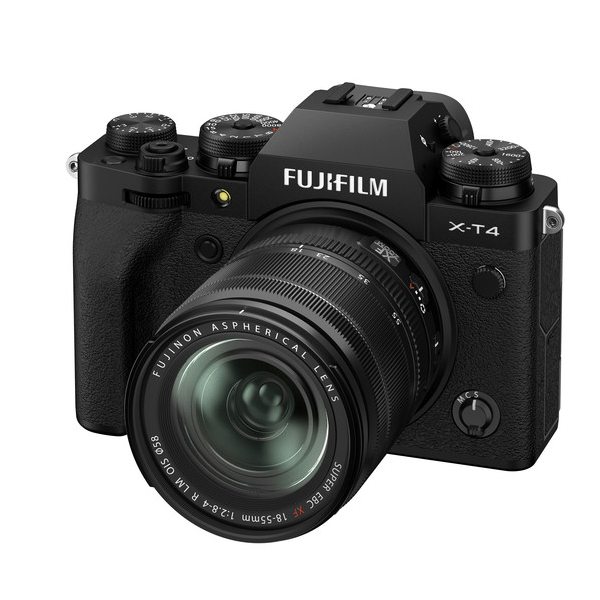
When you’re into astrophotography, you know how important it is to have a camera that can capture stunning images of the night sky.
And that’s where the Fujifilm X-T4 comes in.
With its impressive image quality, versatility, and advanced features, the X-T4 is a great camera for astrophotography.
One of the key features of the X-T4 is its 26.1-megapixel APS-C X-Trans CMOS 4 sensor, which delivers exceptional image quality even in low light conditions.
Additionally, the camera’s high ISO range (up to 51,200) allows you to capture stunning shots of the stars without having to worry about too much noise.
Another great feature of the X-T4 is its image stabilization system, which uses a 5-axis in-body stabilization system to reduce camera shake and produce sharper images.
This is especially important when shooting long exposures of the night sky, as even the slightest movement can ruin your shot.
The X-T4 also has a variety of advanced features that are perfect for astrophotography.
These include its interval shooting mode, which allows you to capture time-lapse sequences of the night sky. It also includes its ability to shoot in RAW format, which gives you greater control over your images during post-processing.
Despite its advanced features, the Fujifilm X-T4 maintains a compact size, making it a great option for photographers who want to travel light.
Megapixels and Sensor – 26.1mp mirrorless crop sensor. Produces some of the best quality images amongst crop sensor cameras.
Low Light Performance – Stunning low light performance with a great ISO range and slow shutter speed option.
Image Stabilization – Built-in 5-axis digital image stabilization.
Noise Reduction – ISO range up to 51,200 captures in low lighting with limited image noise.
Shutter Speed – Conveniently placed shutter dials that allow you to switch to an extremely slow shutter speed.
Exposure Duration – Up to 60 minutes, sensational exposure duration to capture the brightness of faint objects accurately.
Battery Life – Up to 600 shots per single charge and doesn’t drain so the camera can remain in standby or long exposure mode without worrying about depleting.
With its impressive image quality, advanced features, and versatile performance, Fujifilm X-T4 is the perfect tool for capturing stunning shots of the night sky.
“Compact in design, I found the Fujifilm X-T4 perfect for capturing the cosmos on the go.”
Nikon Z6 – Best Camera for Astrophotography for Affordability
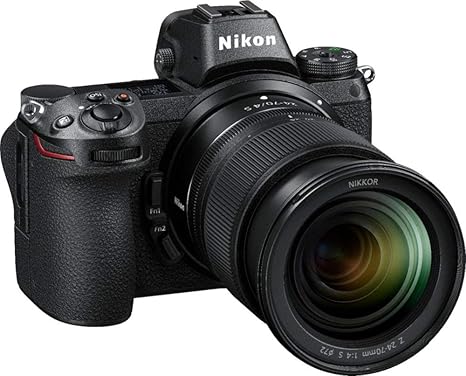
The Nikon Z6 is a full-frame mirrorless camera that boasts impressive features for astrophotography.
Its 24.5-megapixel sensor allows for detailed and high-resolution images of the night sky.
With an ISO sensitivity range of 100-51200, the Z6 provides ample flexibility to shoot in low-light conditions.
The camera’s 5-axis in-body image stabilization system helps to reduce camera shake, making it easier to capture sharp and clear images of celestial objects.
The Nikon Z6 also has the ability to shoot in both RAW and JPEG formats simultaneously, allowing for greater flexibility in post-processing.
The camera also has a silent shooting mode, which is especially useful when photographing in quiet environments, such as during a star party or at a camping site.
Another advantage of the Nikon Z6 is its weather-sealed body, which protects the camera from the elements while shooting outdoors.
However, one drawback of the Nikon Z6 is its relatively poor battery life.
I found that whilst using the camera, I would need to carry extra batteries or an external power source for extended shooting sessions.
Megapixels and Sensor – Full-frame BSI image sensor with 24.5 Megapixels. Captures sharp, vibrant, high-resolution images.
Low Light Performance – This camera’s wide field and range of lenses ensure sharp images, more light and faster performance. It gives brilliant low light results at the ISO 51,200 native.
Image Stabilization – Powerful in-body five-axis VR (Vibration Reduction) image stabilization.
Noise Reduction – Capable of capturing fantastic images with its flawless EXPEED 6 noise reduction feature.
Shutter Speed – With Nikon Z6, you can have 9,999 full-resolution still shots without any shutter vibration. It provides a full shutter press when you aim to take a picture.
Exposure Duration – Up to 900 seconds.
Battery Life – Poor battery life up to 310 shots per charge.
The Nikon Z6 is an impressive camera for astrophotography.
“Offering high image quality, advanced features, and a user-friendly design, the Nikon Z6 is a great choice for both beginner and advanced astrophotographers alike.”
How to buy the Best Camera for Astrophotography
Finding the best camera for astrophotography that suits your needs is no easy task.
There are so many different options on the market and so many factors to consider.
It is important to prioritize what makes a camera for astrophotography capture the best quality images of the night sky.
The following features are the key elements you should be looking at when buying the best camera for astrophotography.
Megapixels and Sensor
While too few megapixels may result in less detailed images, excessively high megapixel counts can negatively impact astrophotography.
Astrophotography experts recommend avoiding high megapixel counts as they can lead to increased thermal noise and decreased image quality.
The best mirrorless cameras have around 28.6MP whilst any between 20 to 30 megapixels are considered ideal.
Cameras with APS-C or full-frame CMOS sensors are considered the best choice for astrophotography, particularly for capturing deep-sky objects in landscape astrophotography.
Full-frame CMOS sensor cameras are a popular choice for deep-sky astrophotography as they are specifically designed for this type of photography.
These features differentiate astrophotography cameras from standard cameras.
Low Light Performance
When capturing deep sky objects and night sky astrophotography, using an ISO range of 1600 with longer exposures is recommended.
It’s important to look for a camera that allows manual adjustment of shutter speed, white balance, and other settings in order to optimize the camera for astrophotography.
The ISO performance of a camera indicates the sensor’s sensitivity to light, making it a decent option for novice astrophotographers.
Additionally, the Auto ISO setting can improve image quality in low light conditions.
By adjusting these settings, photographers can achieve the best results for astrophotography.
Image Stabilization
Image stabilization is a feature that prevents distortion caused by camera shake, ensuring that images remain clear and sharp.
Without it, images of deep-sky objects, such as comets or planets, may appear blurry which negatively impacts the image quality.
As an alternative to image stabilization, a tripod can be used to achieve stable and sharper images.
Many renowned astrophotographers prefer to use tripods to capture stable and sharper images.
For optimal results, it is highly recommended to use a tripod even with image stabilization/
Noise Reduction
Astrophotography and night sky photography often present challenges related to image noise.
To address image noise, two effective options are increasing available light or shortening shutter speed.
Additionally, adjusting the ISO range can help manage noise levels, although higher ISO settings may result in grainier images.
It is important that your camera captures well in high ISO for capturing in the dark.
Shutter Speed
Shutter speed denotes the duration during which the digital sensor in the camera is exposed to light.
A faster shutter speed results in shorter exposure time, and vice versa.
For astrophotography, the ideal shutter speed ranges from 10 to 30 seconds, depending on the focal length.
In addition, to capture sharp and stunning images of deep-sky objects at night, it is crucial to focus accurately.
Manual autofocus settings should be used in low light conditions, and adjusted accordingly based on the shutter speed.
Exposure Duration
Exposure duration is a critical factor in astrophotography because it determines the amount of light that enters the camera and reaches the sensor.
Proper exposure duration is essential for capturing clear, detailed images of celestial objects and minimizing unwanted noise and distortion in the final photograph.
This is particularly important for capturing all the beauty of the night sky including faint stars and planets.
Battery Life
Having a camera with a good battery life is crucial for astrophotography, as many of the shots may require long exposure times.
A dead battery can result in missed photo opportunities, and changing batteries mid-shoot can disrupt your shots.
Best Camera for Astrophotography – My Verdict
Astrophotography cameras must perform well in low-light conditions with good exposure and noise reduction being top priorities.
Through testing all five cameras, I found that the Canon EOS 6D Mark II was the best camera for astrophotography overall.
This is because it is lightweight, has dust and water-resistant features, and the autofocus supports interchangeable lenses.
The camera also produces outstanding image quality and exceptional low light performance.

This may not be your perfect fit however and the Nikon D850 and Nikon Z6 are also incredible options with easy controls and attractive features.
For additional features, the Sony a7 III is an attractive choice that is highly versatile.
Alternatively, those who want a compact camera for shooting on the go, the Fujifilm X-T4 may be a more appropriate fit.
Whichever camera you go for, make sure it is the one that meets your wants and needs rather than the one that is described as ‘the best’.

